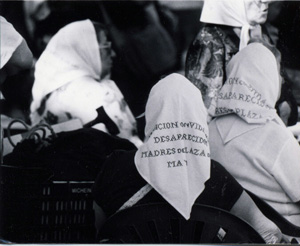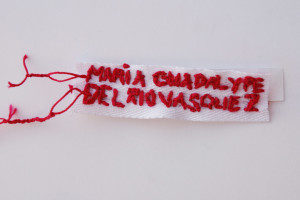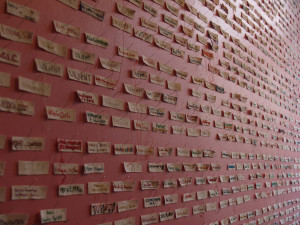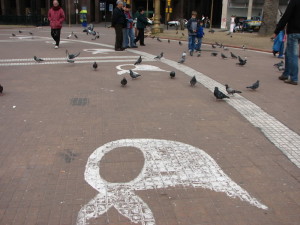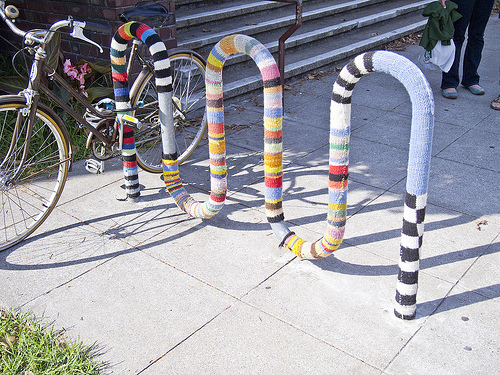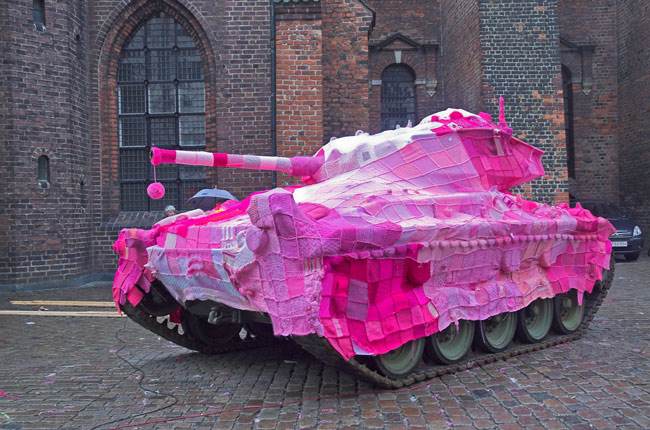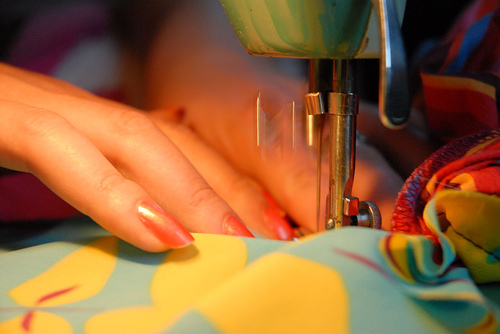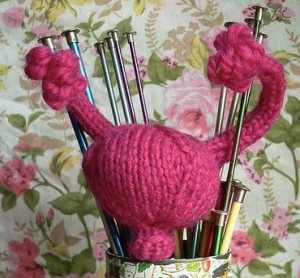
In today’s issue of Crafting for Change… anti-consumerism and knitting vaginas for reproductive rights – crafters challenging the status quo.
First off – craftivists fighting consumerism. The woman behind MicroRevolt knits logos of brands that are known to use sweatshop labor like The Gap and Nike into handmade garments as an exploration of labor, production and consumption. She created a software program that creates knitting patterns from images so anyone can knit their own versions of brand-name goods, like the Gap legwarmers below.
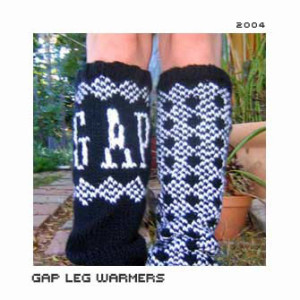
While MicroRevolt is explicitly political, the Counterfeit Crochet Project is more of an open exploration of brands and why people covet them. The artist behind the project encourages people to make their own knockoff versions of designer purses. People have crocheted knockoff Gucci, Fendi, and Louis Vuitton bags, complete with crochet approximations of clasps, embellishments, and handles.
 Chanel, anyone?
Chanel, anyone?
Both these projects ask questions about what makes the brand so important to people and what people are able to create themselves. I like them because they make you think about what goes into these products and what you are capable of making yourself. Recreating a branded product connects people to the production process in a world where the norm is to buy things made halfway across the world by anonymous garment workers.
Probably because a lot of crafters tend to be women, lots of craftivists have also taken on reproductive rights issues. Government Free VJJ is trying to knit a female reproductive organ for every man in the Senate and House. They figure if congressmen have a uterus of their own, maybe they’ll keep the laws out of American women’s bodies. They’ve already sent a uterus or vagina to lawmakers in at least 36 states. This is a hilarious tactic to get politicians’ attention and make pro-reproductive rights voices heard.
 A knitted uterus sent to a North Carolina senator.
A knitted uterus sent to a North Carolina senator.
A women’s institute in the UK led the Embroideries Project to raise awareness of female genital mutilation, a widespread practice in parts of Africa and the Middle East. Women sewed and embroidered vagina quilt patches, and displayed the quilt at a shop in London. The woman behind the Uterus Flag Project has women craft images of their uterus to inform women about unnecessary hysterectomies and the overmedicalization of women’s bodies (more info here). Reproductive organs are not a typical subject of craft projects – these craftivists are breaking this taboo to make people think about important issues related to women’s bodies.
There are plenty more examples of people using crafts to speak up about issues that are important to them. These are just a few examples of craftivists taking on causes they care about in unexpected ways.

